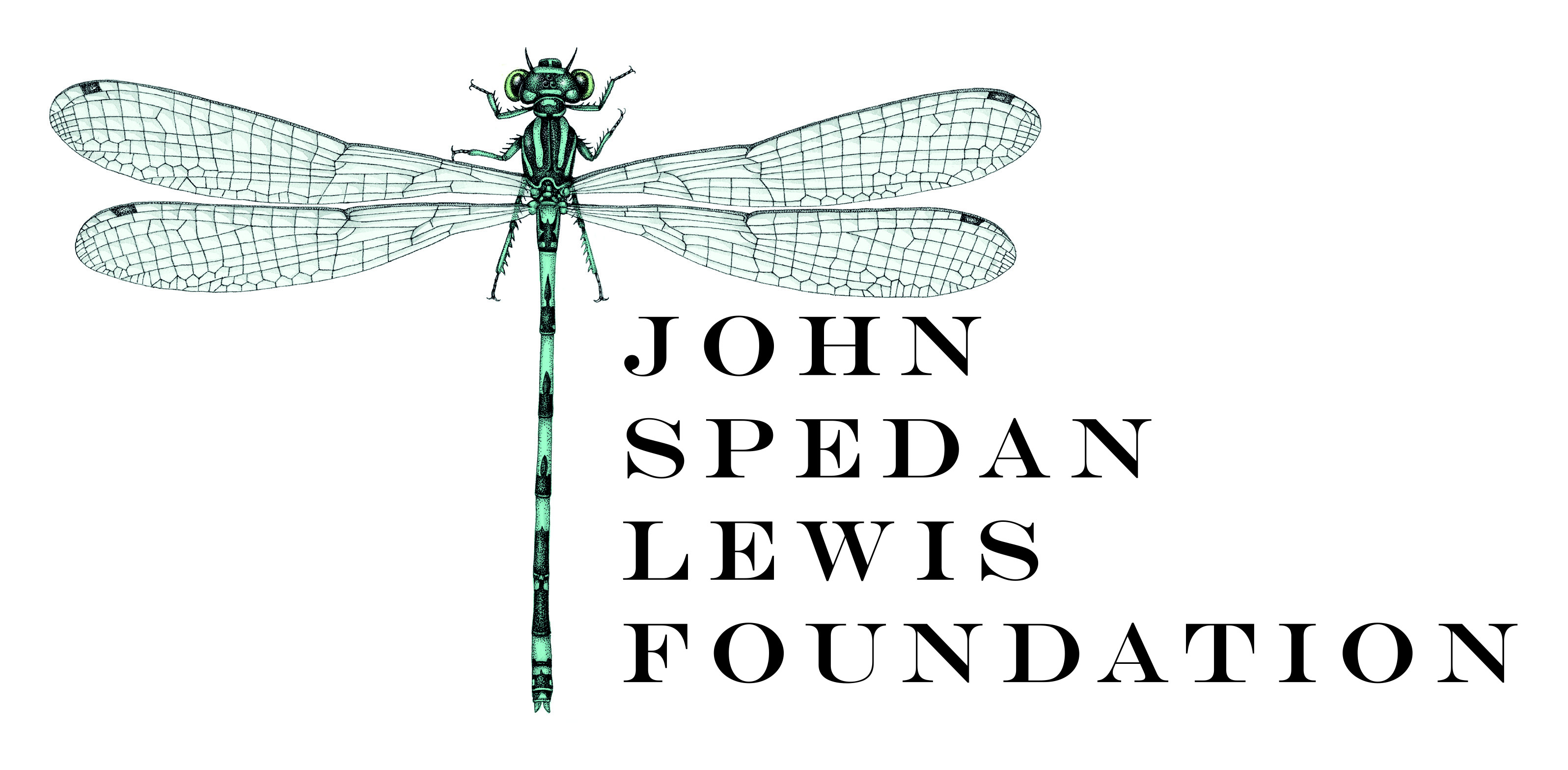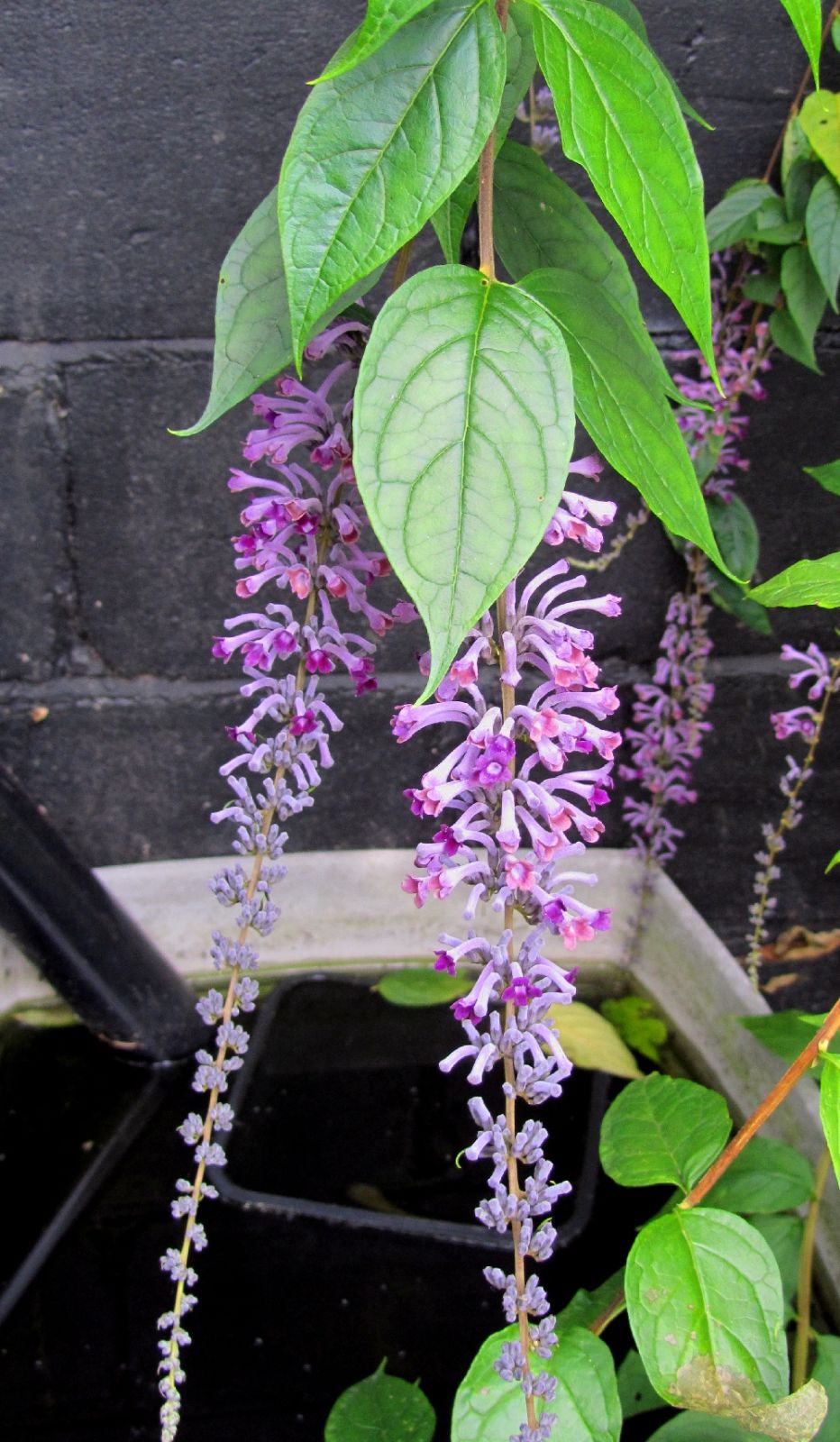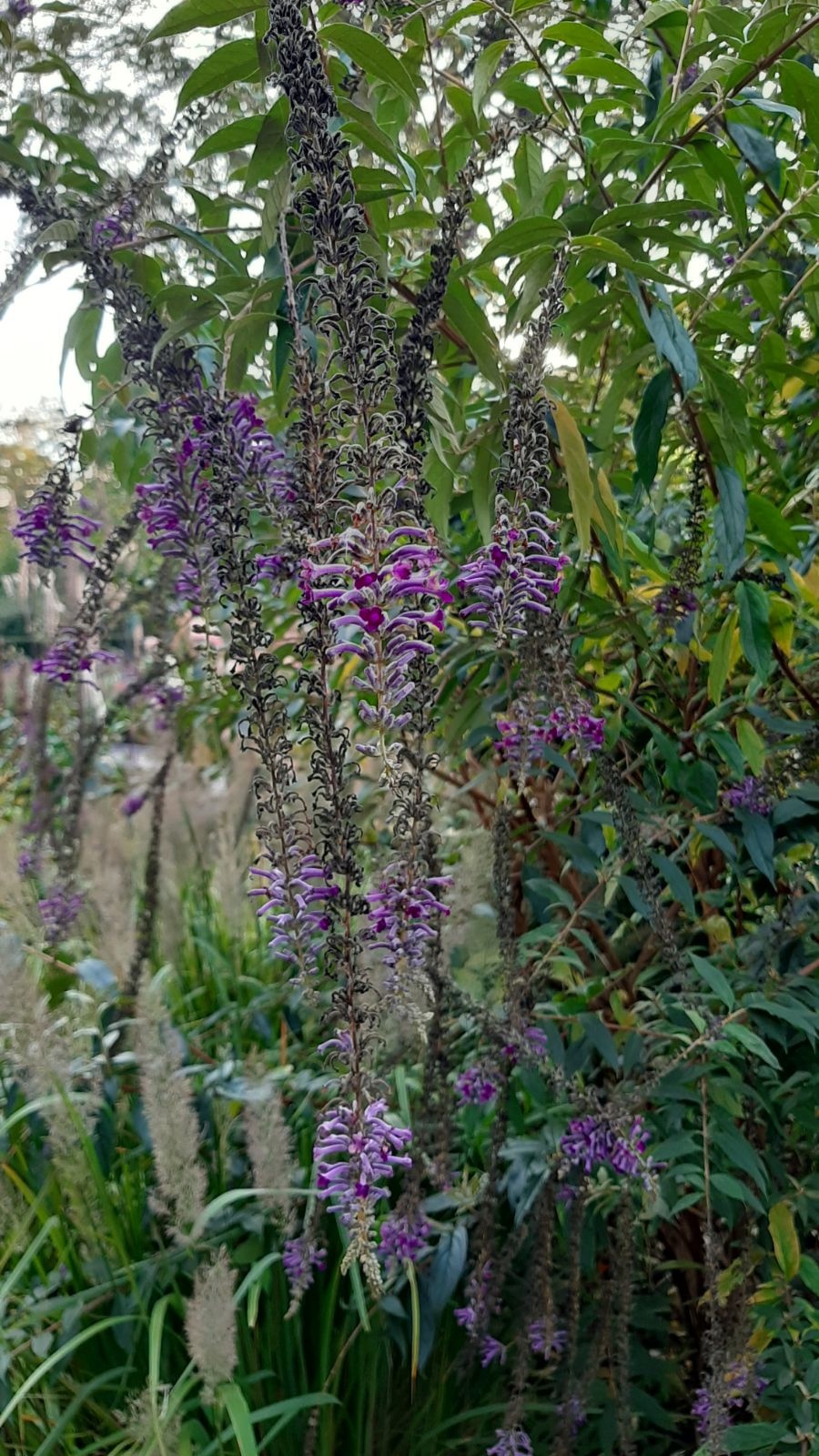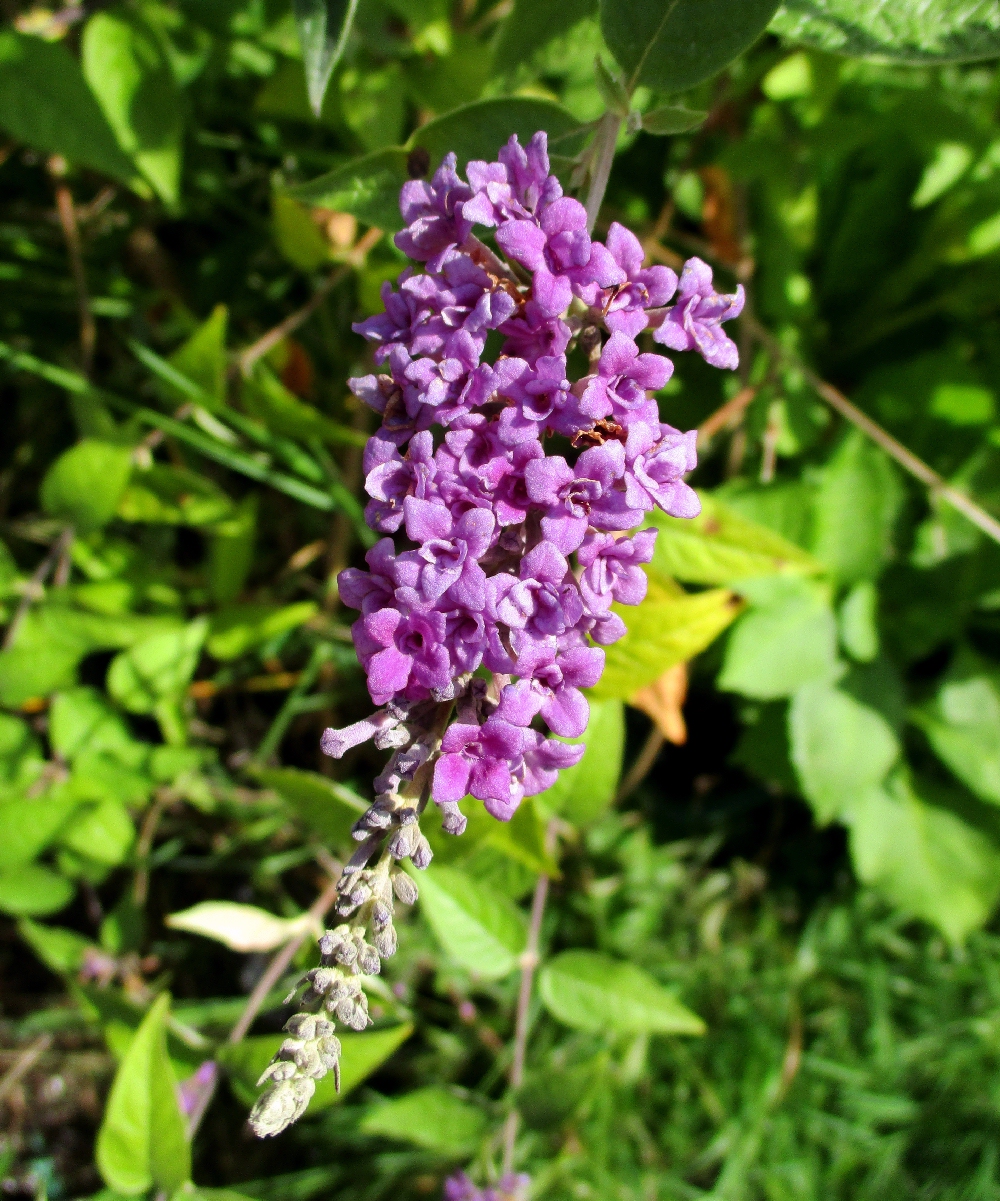Buddleja lindleyana
Sponsor
Kindly sponsored by
The John Spedan Lewis Foundation

Credits
Andrew Large (2021)
Recommended citation
Large, A.T. (2021), 'Buddleja lindleyana' from the website Trees and Shrubs Online (treesandshrubsonline.
Genus
Synonyms
- Adenoplea lindleyana (Fortune) Small
- Buddleja lindleyana var. sinuatodentata Hemsley
Infraspecifics
Other taxa in genus
- Buddleja albiflora
- Buddleja alternifolia
- Buddleja araucana
- Buddleja asiatica
- Buddleja auriculata
- Buddleja caryopteridifolia
- Buddleja colvilei
- Buddleja cordata
- Buddleja crispa
- Buddleja crispa × lindleyana
- Buddleja curviflora
- Buddleja davidii
- Buddleja delavayi
- Buddleja fallowiana
- Buddleja fallowiana × davidii
- Buddleja FLUTTERBY™ Series
- Buddleja forrestii
- Buddleja globosa
- Buddleja glomerata
- Buddleja japonica
- Buddleja LO AND BEHOLD® Series
- Buddleja longiflora
- Buddleja loricata
- Buddleja × luteolufaucia
- Buddleja macrostachya
- Buddleja marrubiifolia
- Buddleja megalocephala
- Buddleja 'Miss Ruby'
- Buddleja 'Morning Mist'
- Buddleja myriantha
- Buddleja New Dwarf Hybrids
- Buddleja nivea
- Buddleja officinalis
- Buddleja 'Orange Sceptre'
- Buddleja paniculata
- Buddleja × pikei
- Buddleja 'Pink Delight'
- Buddleja saligna
- Buddleja 'Salmon Spheres'
- Buddleja salviifolia
- Buddleja 'Silver Frost'
- Buddleja speciosissima
- Buddleja 'Summer Beauty'
- Buddleja virgata
- Buddleja × wardii
- Buddleja × weyeriana
- Buddleja × weyeriana Hybrids
- Buddleja 'Winter Sun'
Shrub 1–3 m; young branchlets, underside of leaves, petioles, and inflorescences rusty pubescent with stellate or glandular hairs, less often almost glabrous. Branchlets quadrangular to sub-quadrangular; stipules absent. Leaves with petiole 1–7 mm long; leaf blade ovate to elliptic, 2–11 × 1–5 cm, membranous when dry; upper surface glabrous or only sparsely pubescent; base cuneate, apex acuminate, margin entire to coarsely sinuate-dentate, conspicuous lateral veins in underside. Inflorescences terminal, almost spicate cymes, more or less interrupted, 4–20 × 2–4 cm, with leafy lower bracts , 1–10 mm. Calyx campanulate to urceolate, 2–4 mm; lobes broadly triangular, outside densely pubescent with glandular/stellate hairs’ sometimes subtended by some small bracteoles. Corolla purple, 1.3–2 cm; tube almost cylindrical 1.1–1.7 cm long, curved below middle, widening slightly from the bend to the throat, outside pubescent with glandular hairs and often also with some stellate hairs; lobes sub-orbicular, 2–3.5 × 2–3 mm. Stamens inserted at or near base of corolla tube; anthers oblong to ovate. Pistil glabrous with ovoid ovary, 1.5–2.2 mm, and clavate stigma. Seed capsules ellipsoid, 4–6 × 1.5–2 mm, glandular-pubescent or less often glabrous. Seeds pale brown, obliquely tetrahedral, narrowly winged on the edge. (Leeuwenberg 1979; Li & Leeuwenberg 1996).
Distribution China Anhui, Fujian, Guangdong, Guangxi, Guizhou, Hubei, Hunan, Jiangsu, Jiangxi, Sichuan, Yunnan, Zhejiang
Habitat Montane habitats along river banks and scrub by watercourses, and on forest edges; 200–2700 m asl.
USDA Hardiness Zone 7b-9
RHS Hardiness Rating H5
Conservation status Not evaluated (NE)
Taxonomic note Buddleja lindleyana is closely related to B. curviflora and B. japonica. These species were placed together in a series called Curviflorae, based on the significant bend of the corolla tube they all possess (Marquand 1930). However, more recent treatments have not afforded these species their own series and consider them continuous with the other Asian species (Leeuwenberg 1979; Chau et al. 2017).
Buddleja lindleyana is one of the more popular species in gardens and is widely cultivated, however it forms a rather straggly and ungainly shrub that requires regular pruning. Unpruned it will grow to about 3 m in height, and perhaps an even greater spread due to its weeping habit. The leaves are small, thin and glossy, medium- to dark-green, with an appearance rather atypical for the genus. The inflorescences are long, pendulous panicles. The individual flowers are purple with a white eye, and long with a significant bend in the corolla tube. They are without an apparent scent. The nectar can only be accessed by lepidopterans with long tongues. Normal flowering time is in the summer months, late June to August in the UK (Stuart 2006)
This species is not as hardy as B. davidii, but will survive an average UK winter (USDA zones 7b-8), able to withstand temperature down to at least –10ºC; significant die-back is likely in harsh conditions, but it will regrow from the ground and may put up suckers at a distance from the main trunk. It is not particularly drought tolerant and requires a fertile moisture-retentive soil.
There has been some selective breeding to develop smaller, more compact cultivars that are more garden-worthy; these efforts have also given rise to the first truly double-flowered Buddleja (see ‘Floral Fanfare’ below).
'Floral Fanfare'
Bred by Peter Moore of the Longstock Nursery, Hampshire, UK, ‘Floral Fanfare’ is more compact and tidier than the species, growing to 1–1.5 m. The individual flowers are doubled, with a second set of smaller petals emerging from the corolla tube. It’s the first and most reliably double-flowered Buddleja available, and is seed-sterile. In cold areas, it may require more protection than the species. (P. Moore, pers. comm.)
'Little Treasure'
Also bred by Peter Moore of the Longstock Nursery, Hampshire, UK, ‘Little Treasure’ is a compact and tidy cultivar, growing to 1–1.5 m height and spread. It has small, glossy leaves. and relatively short internodes. The flowers, which resemble the species in most respects, are arranged in denser panicles than the species. ‘Little Treasure’ will flower continuously throughout the summer with virtually no seed-set. (P. Moore, pers. comm.).
'Miss Virie'
Synonyms / alternative names
Buddleja lindleyana 'Miss Vicie'
The most successful from a group of four smaller B. lindleyana cultivars developed in the US, ‘Miss Virie’ is more compact and well-branched than the species, growing to a height of 1.5 m. The inflorescence is also more compact, while the foliage is typical of the species (Stuart 2006).





